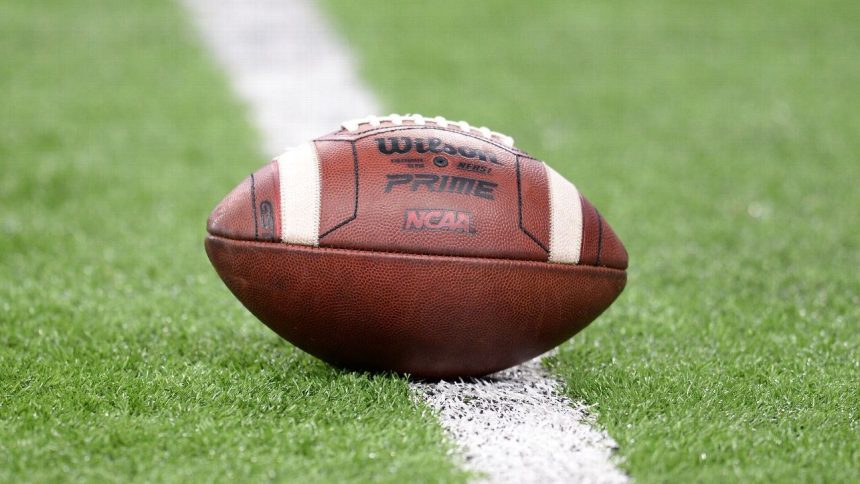
Over the next decade, some exorbitant Power 5 football coaching salaries are projected to exceed the total amount their respective schools spend on athlete scholarships and medical expenses for all athletes across all sports, according to a report released Wednesday by the Knight Commission on Intercollegiate Athletics.
The Knight Commission, a public think tank for college athletics that often pushes reform but doesn’t have the authority to enforce it, released financial projections through fiscal year 2032 that include more than $1 billion in revenue from an expanded 12-team College Football Playoff, which begins next season, and more lucrative conference media rights agreements. The Knight Commission based its report on data from CliftonLarsonAllen LLP, which used current athletics revenue and expense data along with projected revenue for public FBS programs.
The 40-page report highlighted a “crossover point,” when the compensation for the 11 “countable” football coaches per school will exceed the total money spent on tuition, fees, housing, food, books, cost of attendance stipends, medical expenses and insurance coverage.
Amy Perko, CEO of the Knight Commission, told ESPN that the report should make it “very clear” to university presidents that they need to direct their commissioners and athletic directors to develop “a more comprehensive plan on athletic spending.”
“It matters because college sports at the highest level is on a path to being totally incongruent with what presidents, what commissioners, what athletics directors say the mission is about,” Perko said. “Presidents made the decision to expand the CFP understanding that this very successful event will generate more than a billion annually in new revenues, and they have not made any decisions to earmark those new and uncommitted revenues.
“That kind of decision-making needs to be done, because these projections show in the past the new revenues have flowed disproportionately to 11 football coaches. Unless presidents decide to manage the revenues differently, there’s no reason to think that’s not going to happen in the future.”
According to the report, nine of the 51 public Power 5 schools (18%) hit the crossover point in fiscal year 2022. Of those nine schools, four were in the SEC (LSU, Texas A&M, Georgia, Ole Miss), three were in the Big 12 (Oklahoma State, Texas Tech, Texas), and the Big Ten (Iowa) and ACC (Florida State) each had one. In fiscal year 2032, CLA projects that 25 of the 54 current Power 5 public schools (46%), following the additions of Houston, Cincinnati and UCF to the Big 12 this year, will reach the crossover point. That includes a Power 5-leading eight each in the SEC and Big Ten, which are already the two wealthiest leagues.
“These projections show in the past the new revenues have flowed disproportionately to 11 football coaches. Unless presidents decide to manage the revenues differently, there’s no reason to think that’s not going to happen in the future.” Knight Commission CEO Amy Perko
Based on historical trends, and the additional revenue projected for FBS schools over the next 10 years, severance pay for coaches is also projected to jump to more than $175 million annually in fiscal year 2032 — a large increase from $98 million in fiscal year 2022.
The CLA financial analysis gave a more detailed projection of the Power 5 conferences because NCAA bylaws give them the autonomy to set their own spending policies separate from other FBS and Division I schools. They also receive about 80% of the CFP revenue distribution under the current agreement.
According to the report, public Power 5 schools are projected to draw 47% of their total athletics revenue from the CFP, conference media rights and other conference revenue, and NCAA distributions. The largest revenue sources for the Group of 5 are institutional/government support and student fees, which account for about half of their total athletics revenue.
As the 10 FBS commissioners and Notre Dame athletic director Jack Swarbrick continue to meet about the future of the 12-team playoff, revenue distribution remains at the top of the agenda. Perko said there is “a gaping disconnect” between revenues, financial accountability and governance in the FBS.
“That’s another issue that university presidents leading the Division I board as well as those leading the College Football Playoff could make a decision tomorrow to really change that and correct the current misalignment,” she said. “The solutions are well within the presidents’ authority to fix without federal legislation.”
CLA projects that the athletic departments in the 54 public Power 5 schools will account for $16.7 billion of the total annual $20.9 billion in expected athletics revenue from all sources at FBS institutions in fiscal year 2032.
In its report, the commission urged university presidents and chancellors to use the new and uncommitted revenues to advance “athlete education, health, safety, well-being, and gender and racial equity.”
“Recent conference realignments demonstrated to all that college sports at many schools in the power conferences are driven by one all-consuming pursuit: the money chase,” said Knight commission co-chair Arne Duncan, the former U.S. Secretary of Education. “This report starkly underscores that continuing business-as-usual athletics spending with billions in new revenue will create a future that is entirely incongruent with the mission of college sports.”









